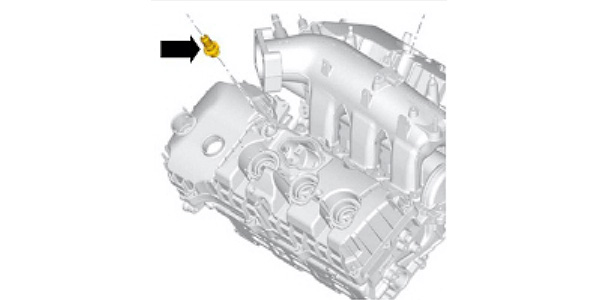Models
2013-2015 Explorer, Flex and Taurus
2013-2015 Lincoln MKS, MKT
Some 2013-2015 models vehicles equipped with a 3.5L Gasoline Turbocharged Direct Injection (GTDI) engine may exhibit blue or white smoke from the exhaust while driving after extended idle.
1. Remove the engine appearance cover, if equipped.

2. Inspect the color of the positive crankcase ventilation (PCV) hose to valve cover adapter. Is the adapter black in color? (Figure 1)
Yes – proceed to Step 3.
No – this article does not apply. Refer to the Powertrain Control/Emissions Diagnosis (PC/ED) manual for diagnosis.
3. Disconnect the PCV hose to valve cover adapter quick connect fitting from the valve cover adapter. When the valve cover adapter is removed, damage will occur to the valve cover adapter locking mechanism. Make sure detached pieces of the valve cover locking mechanism do not fall into the open valve cover port during removal. Rotate the adapter counterclockwise and remove from valve cover.
4. Lubricate the new valve cover adapter O-ring seal with clean engine oil.
5. Install the new green valve cover adapter.
6. Connect the PCV hose to the valve cover adapter (P/N HL2Z-6762-A).
7. Install the engine appearance cover if equipped.
8. Check the engine oil level on the engine oil level indicator.
Is the oil level within the minimum and maximum marks on the indicator?
a. Yes – proceed to Step 9.
b. No – add engine oil as needed to achieve correct oil level on indicator.
9. Drive the vehicle for 15 minutes or a minimum of 5 miles to clear the exhaust of residual oil.













